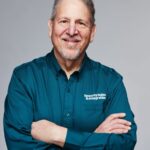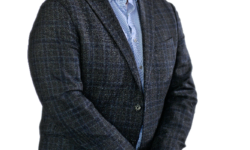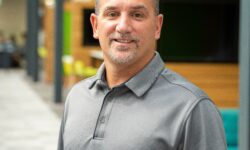Sciens Building Solutions is Creating ‘Something a Little Bit Different’
Heavyweight contender Sciens Building Solutions is skillfully bobbing, weaving, jabbing, and looking to score a knockout blow in the security & fire/life-safety arena.

Sciens’ leadership team includes (l-r): VP of Business Development Troy Conners, CEO Terry Heath and Southeast Regional Director Scott Rheaume. Photography by Originally Gabe.
While it may not rise to the level of rockets, anyone who has tried their hand at the professional installing security/life-safety systems business understands there is a definite science to it. On the surface, it equates to Field Expertise + Business Acumen + Savvy Sales + Adequate Resources = Success. There are myriad subfactors and variables to that equation, but it well serves as a rudimentary formula to flourish in this market.
Among the companies most assuredly executing that proof of concept is Sciens Building Solutions, which since 2016 has been strategically developing one of the industry’s fastest-growing players. Sciens is the Latin term for knowledgeable, which upon close scrutiny, adds up.
“I felt there was an opportunity to create something a little bit different,” says Sciens CEO Terry Heath. “You have some corporate companies at one end of the spectrum, and they tend to be internally focused, not so focused on the customer or employee, and then you had a lot of fragmentation. I thought, ‘Wouldn’t it be neat to build an organization and business?’ The vision was and is to build the largest independent fire and life-safety integrator in the United States.”
The company is well on its way, gaining momentum with the majority of its 16 acquisitions closing in 2022. To date, the Pleasanton, Calif.-based company operates 20 offices located in that state, Florida, Michigan, Maryland, New York, Pennsylvania and Texas, with 1,200 employees serving more than 25,000 commercial sector clients.
Sciens’ unique growth approach includes a dedicated Acquisitions section to its website explaining the benefits and helping facilitate those transactions. In very much a partnering scenario, owners often remain in the sold business. This ensures continuity for customers and personnel alike, and continues to deepen Sciens’ well of proven experience.
“We blinked and just six years later we’re on a pretty decent track,” adds Heath. “It feels like we just started, and to a person, those who have come over and joined the platform, they’re just having a lot of fun. For those people the worksite blurs in a good way because you’re enjoying doing what you’re doing. That’s where we came from and where we plan to keep going. It’s about staying true to those values and true to the integrity of the company.”
To expound on this winning methodology, Security Sales & Integration stepped into Sciens Building Solutions’ leadership laboratory for a conversation with Heath, Head of M&A Troy Connors and Southwest Regional Manager Scott Rheaume. They share key components of the business, including its approach to footprint and offerings expansion, vertical market focus, revenue opportunities and confronting challenges.
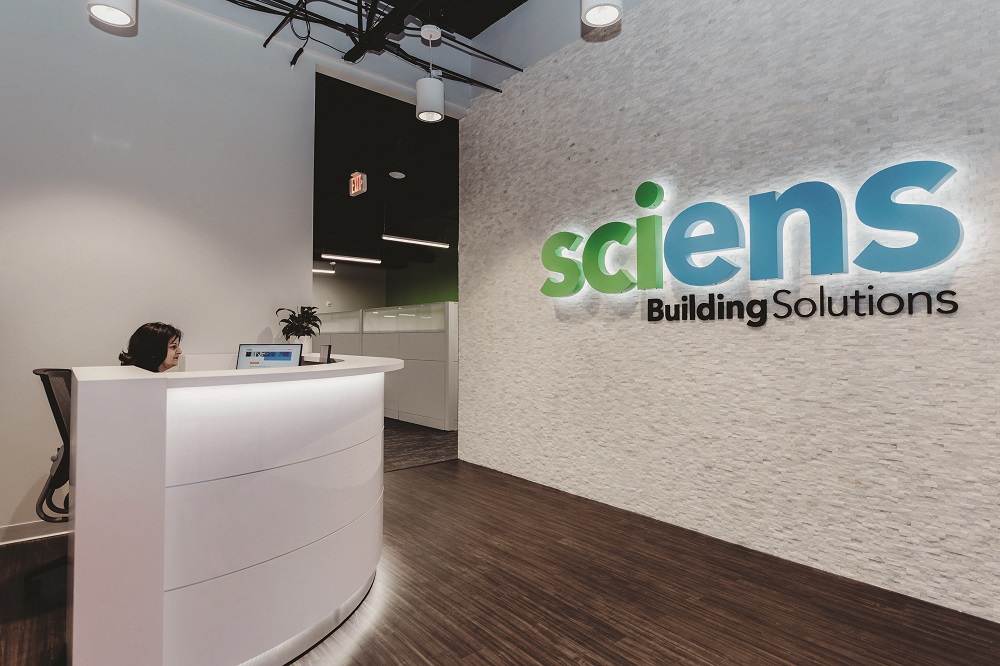
Maribel Ortiz welcomes visitors to Sciens in Orlando, Fla., one of the company’s 20 locations.
Sciens is very active and organized toward acquisitive growth. Can you explain the mindset M&A strategy?
Terry Heath: It is anchored in the fact that we’ve done 16 acquisitions in six years and not 60. From an organic standpoint, we want to grow, but we put achievable, challenging targets ahead of ourselves. We’re looking for about 10% organic growth year-over-year. On the acquisition side, it is about our ability to be able to give the amount of time and effort and energy to a business to help it grow. As we buy companies, we call them divisions. We don’t acquire companies and then just leave them alone. The reason they’re partnering with us is because they buy into and believe in our investing growth strategy. They believe in our values.
For us, we need some mindshare out there to be able to make that a reality. We’ll continue to grow, and in fact will ramp up a little bit, our acquisitions. As we build out our platform, we have a dedicated M&A team in place, which we didn’t have a couple years ago. It’s a diligence and integration team. It allows us to do more acquisitions, which figures to be in the range of eight to 10 a year.
Troy Connors: In the industry today, you hear things about interest rate hikes and the cost of money, etc., but we have a very strong financial backer in Carlyle. They’re our private equity backer. We have the luxury of moving as quickly, as Terry mentioned, with the value we can add to some of the companies we acquire. We want to double, triple every market, and we have a playbook to grow in every location we’re currently in. That gives us a little bit of luxury in being able to be choosy as far as acquiring companies that fit from both a financial and cultural perspective.
Heath: One of the most gratifying things of what we’re building is the impact on people’s lives and on their businesses. These companies are their babies, and what happens after acquisition is really important. For me and for us, it’s all about values and culture and integrity. The majority of our owners still come to work every day. They could be living on an island somewhere but opt to do that. That is probably the best litmus test to reflect what we’re doing with the companies after we acquire them.
We’re looking for companies in markets where we want to be. We’re looking for companies that do what we do, and we’re looking for companies that have the right culture. We don’t have any egos, we’re just a bunch of folks who grew up in this industry. That kind of nuts-and-bolts approach resonates with these independent companies.
What about your perspective on consolidation in the industry overall? Do you see that accelerating? If it is, does that make it more competitively challenging for you to find the best candidates to acquire?
Heath: Consolidation wasn’t occurring when we all got in the industry, and now it seems to have accelerated. Even if I look back to 2015, really when we started Sciens, it took a year before we acquired our first company. There wasn’t this active consolidation. It seems private equity woke up to the opportunities in the space, and they all watch each other, and one jumped in and others jumped in. Now there are several companies very much engaged in acquisitions. We continue to be very well-positioned. There’s still hundreds of companies out there that may not have a succession plan or want to monetize their sweat equity and are looking for a partner.
There’s quite a ways to go, but consolidation is going to continue, and owners will more carefully consider who their partner is going to be. It’s a small industry, everybody knows everybody and folks talk about what the experience has been when ABC company acquired them.
Scott Rheaume: For us, it goes back to having prior sellers heavily engaged with the business and wanting to be part of it as the model going forward. In every market I’ve been part of, in every division, it’s about building upon that legacy. How do we take the best parts of it and then with the backing of Sciens and Carlyle, how do we make it better? How do we bring in additional support systems so they have the right ERPs and the tools and the trucks to go service our customers? That’s a differentiator.
In terms of footprint, what is the strategic vision for where you’d like to see that go? Are you looking to cover every corner of the U.S.? What about Canada? Anywhere else?
Connors: We have 16 divisions right now, the result of 17 acquisitions where we co-located. We’re in a little bit of a U-shape from California, and then into Texas, and Florida, and then up to the Northeast. It makes sense for us to continue to build those markets we’re either already in or that are adjacent to our divisions. But if we find the right company with the right culture and it fits our business model and it’s in a major market, we’re want to be there. NFL cities generally have market potential for us.
Heath: It’s about having a presence in the major metros around the U.S., and, ultimately, I could envision us going international. I grew up in London and I was in the industry in England for a short period of time before moving to America. I am very familiar with the codes and standards there, and I was also responsible for UL markets around the world when I was running the Siemens fire business. But we want to stay focused and disciplined for the foreseeable future in the U.S. before stretching everyone too thin.
Sciens seems focused on every imaginable commercial vertical market, but which ones are core?
Rheaume: We have four real important ones. Based on the complexity of the customer and the critical nature of life safety, and the specific requirements, we play very well within the healthcare industry. We have a strategic focus on it. Another one is education. We’re really focused on universities and network applications along with K-12. There are now many more K-12 customers that look at services where there used to be self-maintainers. We’ve had success along with the installation within those markets, but also then supporting the long-term service for those customers.
Then there’s the government space. We have some very nice government customers, and we also have some governments on the central portion of Florida. In counties, municipalities, we play very well too. Some of the other markets would be hospitality and entertainment. That’s where we play best, in those four markets and where we’re really focused.
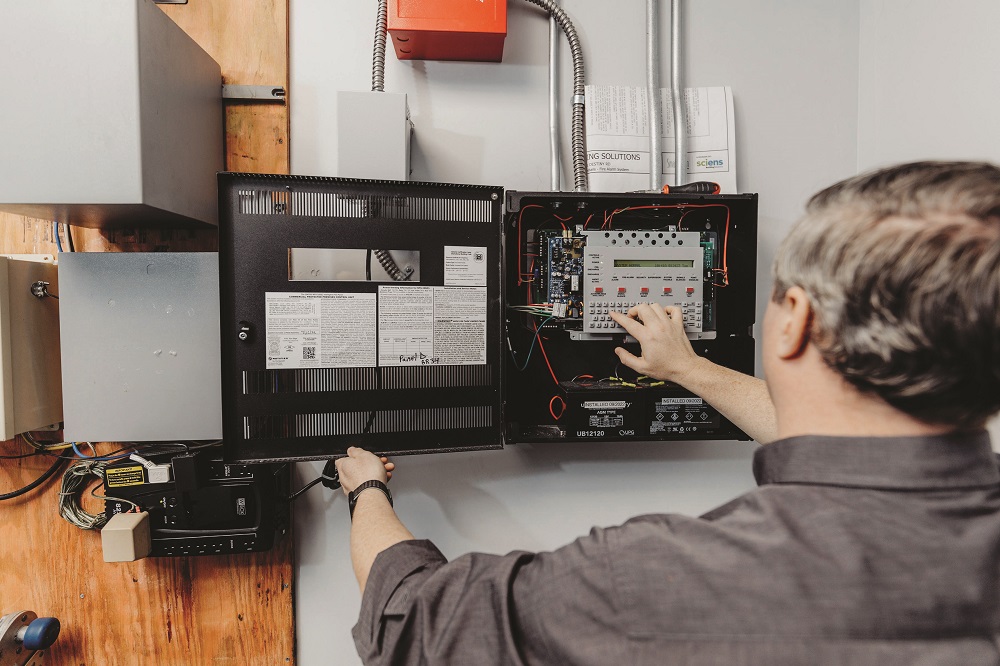
Sciens aims to serve as a one-source provider of fire, security and life-safety solutions and services. Pictured here is associate Drew Stone.
Let’s talk pressing challenges. The supply chain seems to have eased a little but has been an issue, particularly on the fire side. Also, inflation and the economy. How is Sciens coping with and strategizing around these factors?
Heath: The supply chain and inflation have been a drag for all industries. But it’s significantly better than it was a year ago. We still have a lot of products sitting in warehouses where we don’t have the complete system. We can’t get onto the project site and finish those jobs up. Anyone doing any kind of work in buildings is feeling the same challenge. No manufacturer is doing better than the other; they’re all in it together and we’re on the receiving end. Peripheral devices are back to about 80% from a supply chain perspective. Still, some of the panel components are behind that. Of course, you need a complete system. It’s going to be probably another six months before it gets closer to what it was pre-pandemic.
Inflation creates its own special set of challenges. Where we can, we’re passing that on. We’re also sensitive to the needs of our customers. We’re managing through it like everybody else is and it looks like it’s starting to ease off with the increased fed rates. We’re all going to be feeling it through this year and into next. We’ve been through these types of situations before in this industry. We know how to help the organization and our people get through these kinds of scenarios. We’ll knuckle down and come out the back end.
The nice thing about this industry — because it’s life safety, because these systems are critical, they need to be serviced, they need to be tested. That helps us get through some of the economic downturns.
Connors: Again, we look at a company like Carlyle, our financial backer, our private equity investor, and believe we have an advantage in these downturns.
Heath: Also, there’s a lot of companies that don’t have a succession plan. There’s a lot of companies thinking about the future and perhaps they don’t want to go through another downturn, manage through another recession. That’s why we’re seeing an increase in sellers wanting to engage folks like us. They want to take some chips off the table, but because of their sweat equity they want to stay involved with the company. We offer a good opportunity for them, particularly when times get a little troubled.
Rheaume: Based on some of those supply chain issues, we have a very strong backlog. We’re well positioned and expect those backlogged jobs to progress with the improving supply chain. Our code-driven focus on services is another plus for our business. Sciens is very competitive with major competitors within the local markets we serve, which positions us as a great value and partner for our customers.
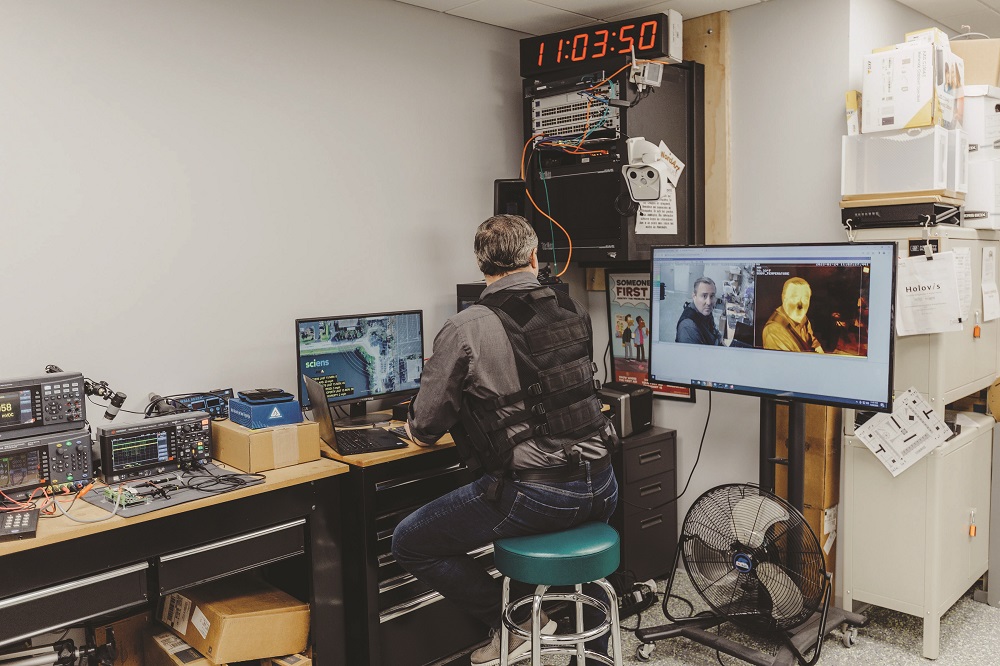
Sciens engineers, designs, installs and maintains a full range of systems. Here, a tech tests a body-worn camera.
Let’s jump over to technology and services. Fire tends not to be on the leading edge, but are there two or three technologies or services gaining traction?
Rheaume: One of the things that applies across multiple product lines is remote diagnostics and doing remote-based services. You have other technologies in the fire alarm industry where you do one-person inspections based on resetting through a handheld device of those systems where traditionally they were based on two. It’s about data analytics, capturing that data and integrating it into other systems. In our security business, that technology is ever evolving. In some cases, we play in complex environments and do security at a very high level. There’s some facial recognition, smart servers, managing data storage and sharing data among multiple services and being as cost-effective as possible.
What is Sciens’ philosophy for recurring revenue within the business? Do you like to try to tie some recurring to every account?
Rheaume: We’re really focused on the service model. We design and install solution applications across fire, security and sprinkler systems. Then the goal is to sell services and support the customer long-term over many years. Testing and inspecting is a critical part of our business, which by default is recurring. When you perform well, you retain that test and inspect agreement. In most of our markets we play well in fire alarm and sprinkler service, and so we test and inspect for both. You can then add other bundled service such as emergency lighting, extinguishers and supplemental systems. The customer is really looking for that one-stop shop to service those systems as a value-added partner.
We also provide monitoring services for the fire alarm and sprinkler side of the business, as well as for security monitoring, and that too is recurring. You also have licensing requirements on cameras and for software updates, etc., that also becomes recurring. A big portion of the overall business is recurring, but fundamental is that test and inspect service base.
Heath: As we build the platform, we are uncovering opportunities every time we add new companies. Take Florida, for example, we cover the whole state. We have over 600 employees there. We have capabilities that when they’re shared across locations, open up new opportunities with customers. We have customer relationships in Jacksonville that may have project opportunities in South Florida, that we can now do because we have a presence there or because we have capability there. It is a complete service model. We’re looking to provide service for a building’s ordinary alarms, sprinklers and security systems for a complete offering.
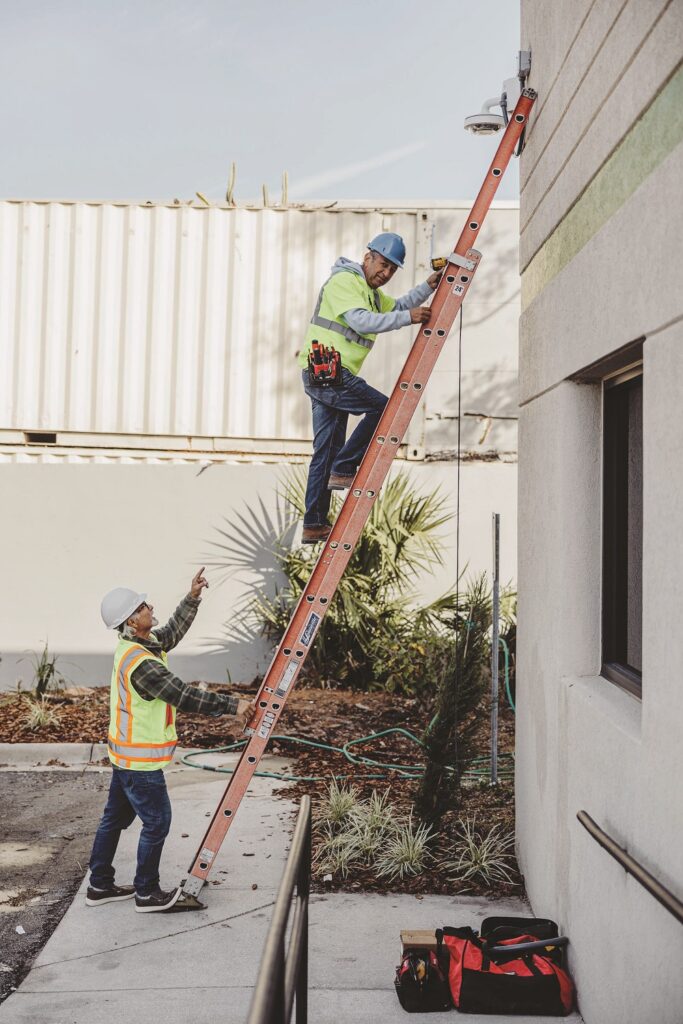
Technicians Carlos Lavayen and Jose Tobar are among Sciens’ fast-growing staff of more than 1,200 people.
Speaking of a one-stop shop, does the fire offering give Sciens a foot in the door to leverage opportunities to then offer things like access control or video surveillance in those same facilities? How do you make sure customers understand the full breadth of your offerings?
Heath: Yes, there’s a big opportunity to expand from the fire into the security side. Not all fire businesses have that capability. Security is a very different system with a product portfolio that is moving much faster and not bound by regulation. It’s a different type of sale. It’s a highly technical, integrated sale. You’re selling solutions and solving customer problems rather than putting systems in that meet the code requirements. That’s where we’ve gone out and acquired, in certain markets, security businesses that have the knowledge and capability to augment the fire alarm sales organization.
We have a pretty robust sales organization on the project side and on the service side. It’s those businesses working together to support the customers where some of the magic happens. We don’t try to make a fire alarm salesperson a security expert or the other way around. We work together as a team to provide a complete solution.
Sales wise, do you sell by verticals or to the overall marketplace? How do you segment it?
Heath: On the project side for fire alarm and sprinklers, we have very good decades-long relationships with the contracting community, the GCs and the electricals — it’s a pretty straightforward, standard model. That then transitions into relationships with the end users, building operators or owners as projects are finished and we continue to support those buildings. On the service side, we are focused in those key verticals Scott referenced. They’re set up in a typical model where the salesperson is responsible for supporting the buildings in their territory.
Rheaume: As far as how customers gain information or knowledge of what we do, fundamentally we have conversations with people to explain it. We spend as much time as possible in front of our customers, including higher sales management to help support those staffs. We do it by word of mouth, building relationships and selling services across multiple products.
Heath: The companies we’re buying and partnering with have been around a long time with great reputations in their markets for decades. That’s a good starting point for us to then provide more offerings from sister companies. We can go back to those existing customers where we have great relationships and offer to do more for them today than we could yesterday because of the power of the platform.
If you enjoyed this article and want to receive more valuable industry content like this, click here to sign up for our FREE digital newsletters!

Security Is Our Business, Too
For professionals who recommend, buy and install all types of electronic security equipment, a free subscription to Commercial Integrator + Security Sales & Integration is like having a consultant on call. You’ll find an ideal balance of technology and business coverage, with installation tips and techniques for products and updates on how to add to your bottom line.
A FREE subscription to the top resource for security and integration industry will prove to be invaluable.

